With more people exploring the backcountry and wildlife habitats shrinking, human-bear encounters are on the rise.
A bear wandering into your camp isn’t just a thrilling campfire story—it can be dangerous for both you and the bear. Proper bear-proofing protects your safety and helps preserve the wild behavior of these magnificent creatures.
Bears are intelligent, curious, and have an incredible sense of smell—up to seven times stronger than a bloodhound’s! They’re not inherently aggressive, but they are opportunistic. If they associate humans with food, they lose their natural fear, creating a cycle that often ends badly for the bear.
Learning their habits helps you anticipate and prevent unwanted visits, so let’s take a look at some key tips to incorporate into your repertoire of safe camping tips.
Bear-Proofing and Regulations in Bear Country by Region
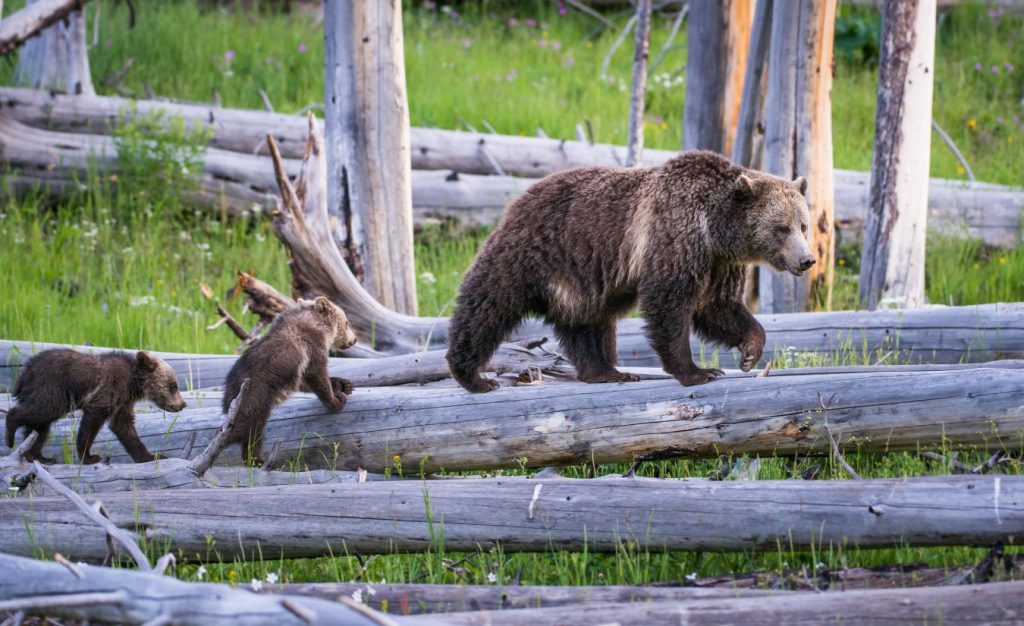
Tips for Black Bear vs. Grizzly Country — This is the first knowledge to acquire before heading out. Black bears are more common and more easily scared off. Grizzlies require extra caution and may react differently to deterrents. Learn which species are in your area and adjust your strategies accordingly. Both types can be exceedingly dangerous if seen with cubs, always keep your distance!
Regional Regulations, Gear Recommendations, and Local Insight — National parks and forests often have specific rules—some mandate bear canisters or restrict camping zones. Check local guidelines for camping in bear country and talk to rangers before making any purchases and setting up your campsite.
Choose the Right Campsite for Bear-Proof Camping
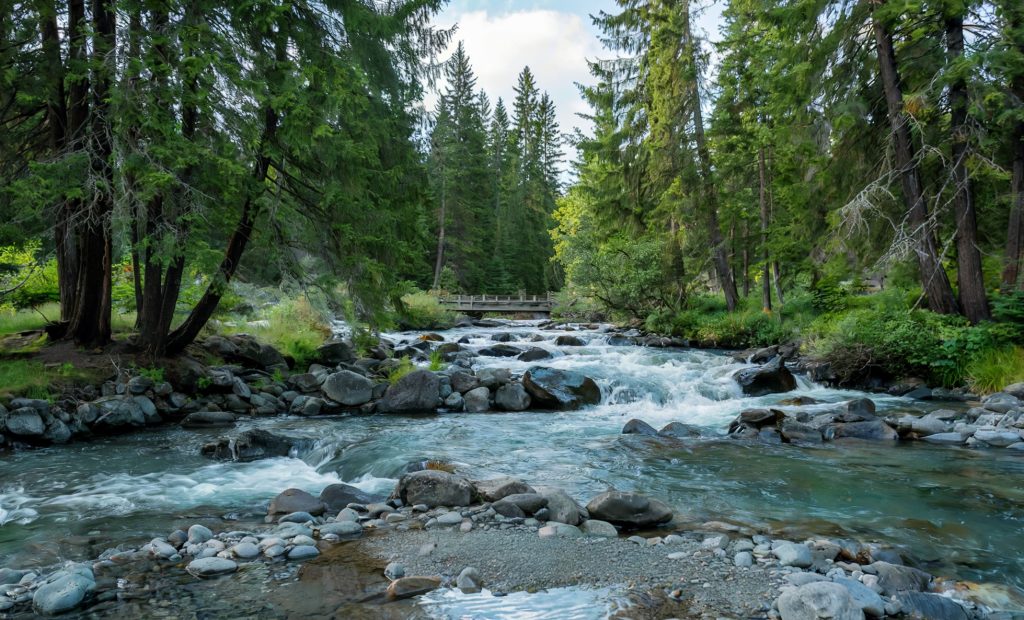
Avoid High-Risk Zones and Wildlife Corridors — Steer clear of berry patches, animal trails, riverbanks, and any place with bear scat or fresh tracks. These are prime zones for bear activity.
Flat, open areas with good visibility allow you to detect wildlife from a distance and reduce surprise encounters. Use a pair of high-quality binoculars to make an accurate scan of the area.
How to Spot Natural Bear Attractants Before You Pitch Your Tent — Bears are drawn to smells, sounds, and sometimes even visuals like shiny wrappers.
Avoid camping near carcasses, garbage pits, or places where previous campers may have left behind messes. Fresh vegetation, dropped fruit, or sap-dripping trees can also lure them in.
The 100-Yard Rule for Sleeping, Cooking, and Food Storage
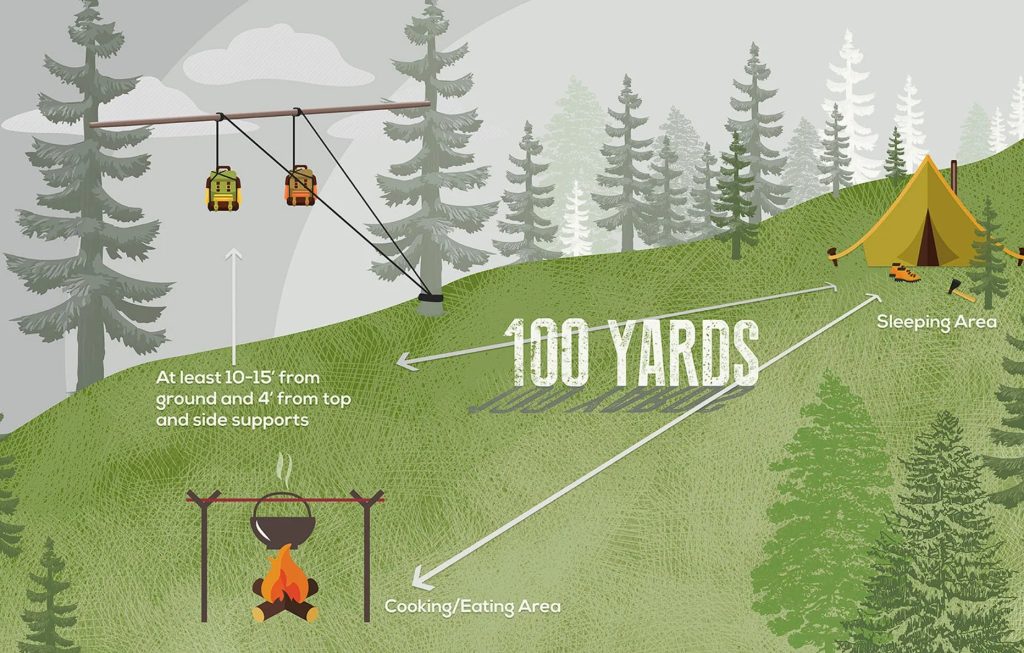
Creating a Strategic Triangle to Stay Safe — Establish a triangle between your sleeping area, your kitchen, and your food storage—each point at least 100 yards apart.
This layout minimizes the chance that a curious bear stumbling upon dinner smells will lead them straight to your tent. Think of it as your invisible force field of safety.
Food Storage Done Right
Bear-Proof Canisters vs. Bear Bags: What Works Best and Where — In bear-heavy regions, bear-proof canisters are often required—and for good reason. They’re tough, tamper-proof, and legally compliant in national parks.
Bear bags, when hung properly, can also be effective but require trees with strong overhangs and some knot-tying skills.
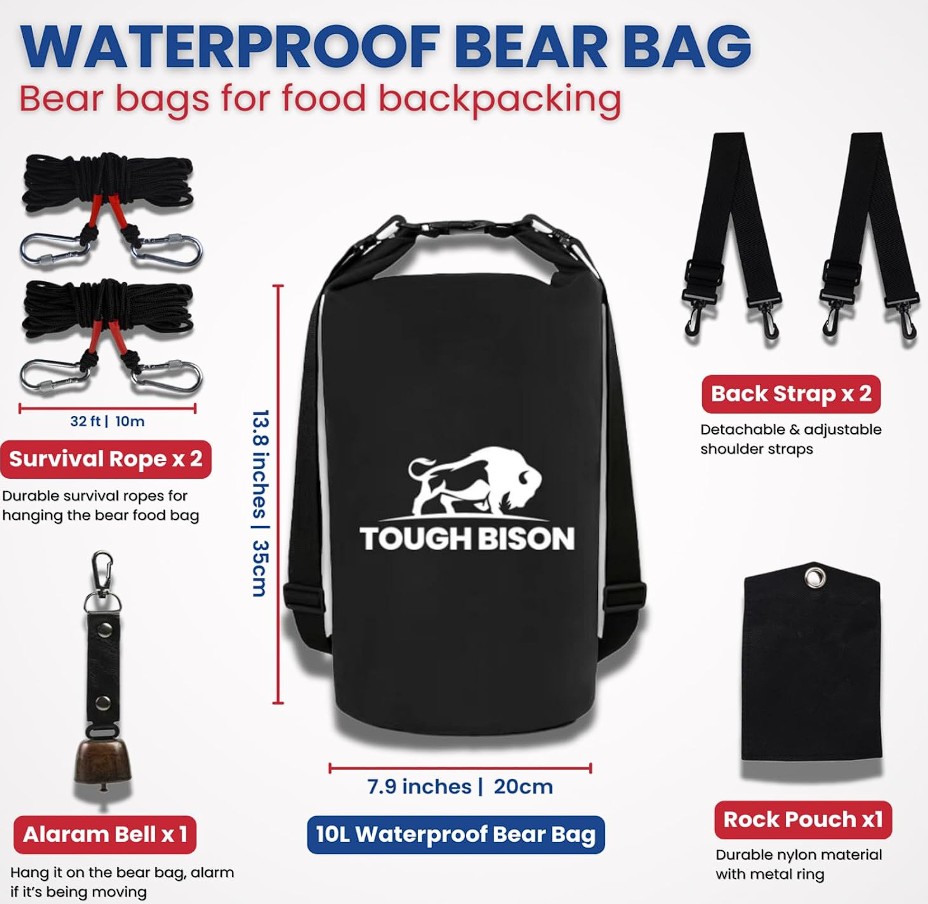
Includes a bear bag hanging kit that simplifies the process of securing your food. The perfect backpacking food bag for quick and easy use in any camping scenario.
How to Hang a Bear Bag Like a Backcountry Pro — Find a sturdy branch at least 15 feet off the ground and 6 feet from the tree trunk. Use the counterbalance method or the PCT method seen in the video below to hoist your food into midair. Practice at home before hitting the trail to avoid fumbling in the dark!
Coolers, Vehicles, and Lockers—What’s Truly Bear-Resistant? — Standard coolers? Nope. Unless they’re a certified bear-proof cooler, they won’t cut it. Some bears have learned how to open car doors—yes, seriously—so don’t count on your vehicle as a safe stash. When available, use bear lockers provided by parks and forests.
Cooking with Caution
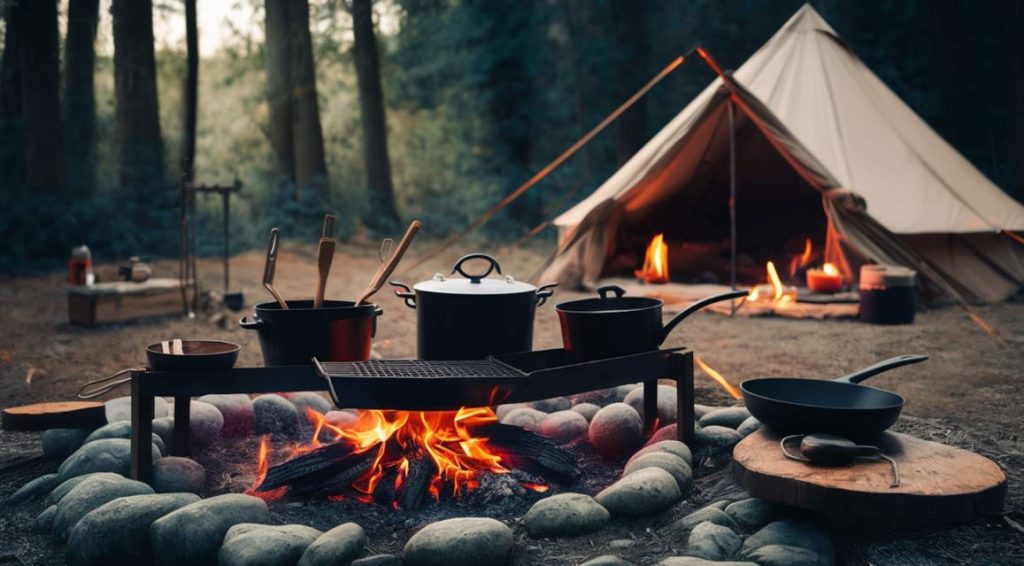
Low-Smell Meals and Scent-Free Strategies — When assembling your campfire cooking kit in bear country, stick to simple meals that don’t involve sizzling bacon or fish. Go easy on the garlic and spices. Dehydrated meals are less aromatic and easier to clean up. Store all cooking utensils and food prep gear away from your tent.
Cleaning Up: How to Leave No Food Trace Behind — Scrub every last crumb. Strain your greywater through a fine mesh, pack out the solids, and scatter the rest 200 feet from camp. Wipe down surfaces, clean your hands, and double-bag all trash. Leave No Trace!
Trash Talk: How to Manage Waste Like a Wilderness Ninja
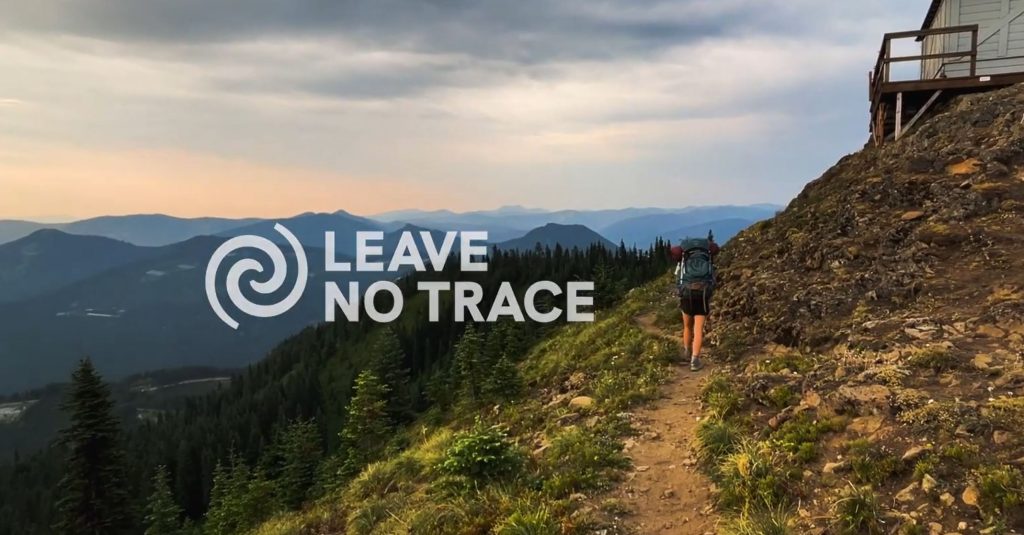
What to Do With Food Scraps, Packaging, and Dirty Dishes — All waste—including micro-trash like peanut shells, tea bags and fruit rinds—should be packed out or stored in bear-proof containers. Don’t burn garbage, and never bury it. Bears can smell underground food from astonishing distances.
Tips for Greywater and Soap Use — Use unscented biodegradable soap sparingly. Dispose of wastewater at least 200 feet from water sources, trails, and campsites. Even soapy water can attract a curious bear.
Scent Control Beyond Food
Toothpaste, Deodorant, and Sunscreen—Yes, Bears Care — If it smells good to you, it smells irresistible to a bear. Store toiletries with your food and keep your body clean. Opt for unscented versions of personal care items whenever possible.
Securing Toiletries and Scented Gear Properly — Even lip balm, gum, or bug spray should be considered attractants. Don’t keep them in your pockets or tent. Use dry sacks or odor-proof bags to consolidate everything that carries a scent.
Bear Deterrents and Tools You Should Carry
Bear Spray: How to Use It, When to Carry It — Bear spray is the gold standard in bear defense. Keep it holstered and easily accessible—not buried in your pack. Know how to use it before you need it, and practice drawing it quickly.
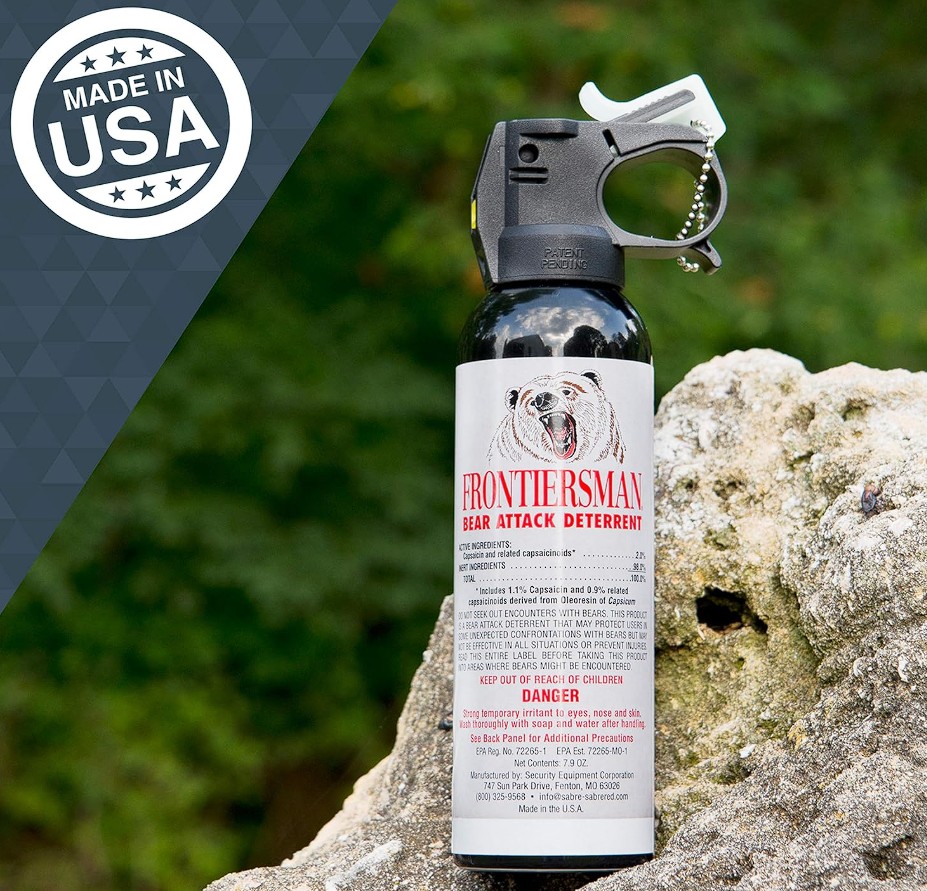
Strongest formula allowed by law! Frontiersman bear spray guarantees maximum strength in each canister.
SPRAYS UP TO 50% FURTHER.
Airhorns, Bells, and Tech Gadgets: What Actually Works — Bear bells? Mostly decorative. Loud noises like clapping or talking are more effective. Specially designed bear horns can effectively startle a bear in close range. Some campers also use motion-sensor alarms or bear deterrent lights for added security.
Tents and Sleeping Gear Precautions

Keeping Sleeping Areas Clean, Neutral, and Odor-Free — Never eat in your tent—ever. Shake out sleeping bags before use and avoid wearing the same clothes you cooked in. Think of your tent as a sterile zone.
What NOT to Bring Into Your Tent — No snacks, gum, wrappers, flavored water, or even minty lip balm. Not even baby wipes. When in doubt, leave it out—or stash it with your food supplies.
If a Bear Visits Your Camp — The Dos and Don’ts of a Surprise Encounter
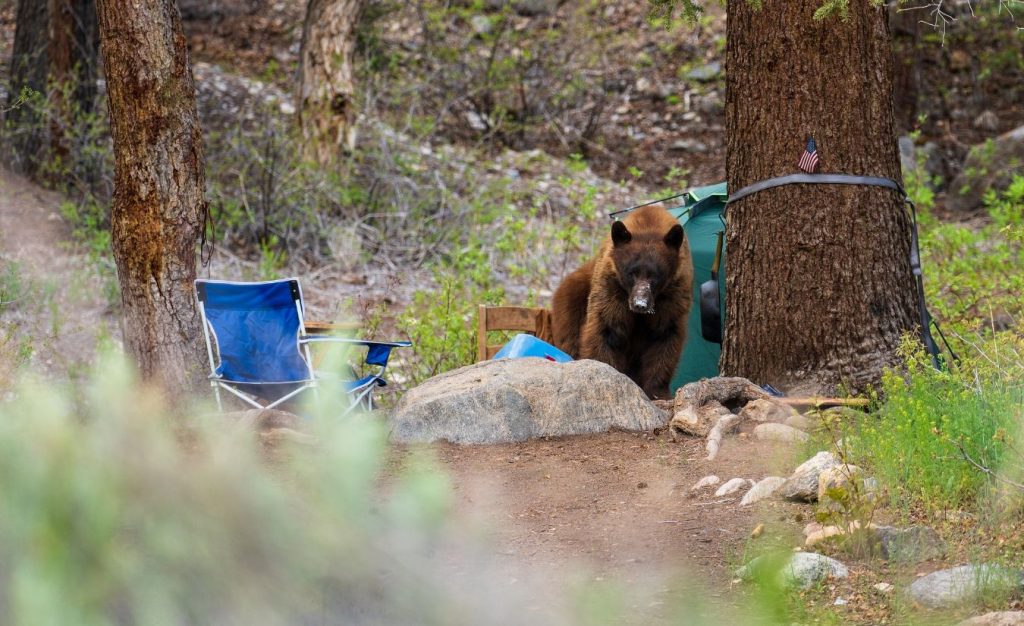
Don’t run. Don’t scream. Do make yourself large, speak calmly, and slowly back away. If the bear stands up, it’s usually just trying to get a better sniff because it is curious. If it charges, stand your ground—chances are it’s a bluff.
Know your bear species. Black bears are more likely to be scared off by noise. Grizzlies require a different approach. Keep your group together and your bear spray within arm’s reach.
Camping With Kids or Pets? Plan Ahead
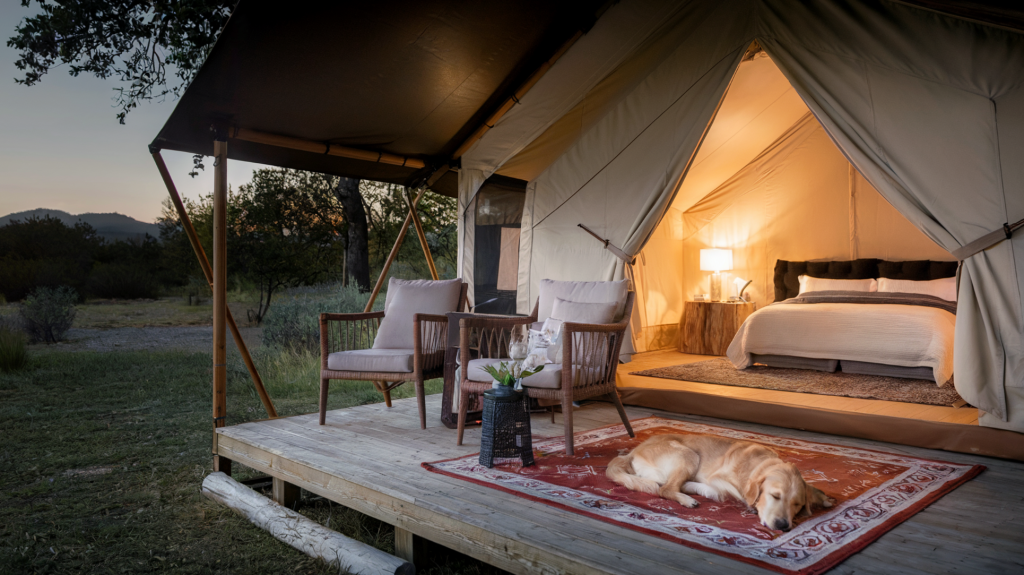
Supervise children and keep them close. Store baby food and pet food just as you would human food.
You can teach kids bear safety in a fun, non-scary way. Turn it into a game—like “Scent-Free Superhero” or “Tent Zone Patrol.” Empower kids with knowledge instead of fear. Practice what to do if they see a bear, just like a fire drill. You can also incorporate your knowledge into non-scary campfire stories for kids.
Camping — or even pet friendly glamping — in bear territory adds a layer of responsibility. Here are seven key considerations to keep your furry friends—and local wildlife—safe:
Keep Pets Leashed at All Times — Even well-trained dogs may chase or attract bears. A leashed pet stays close and under control, reducing the risk of dangerous encounters.
Never Leave Food or Pet Bowls Outside — Pet food has strong smells that attract bears. Feed pets indoors (like in a tent or camper), and store food in bear-proof containers or lockers when not in use.
Avoid Walking Pets at Dawn or Dusk — Bears are most active during twilight hours. Schedule potty breaks and walks in full daylight to minimize risk.
Make Noise When Walking — Attach a bear bell to your pet’s collar or talk loudly on walks to alert wildlife of your presence—surprise encounters are what you want to avoid.
Clean Up After Your Pet Immediately — Yes, even poop! Pet waste smells like food to a bear and can draw them near your campsite.
Sleep with Pets Inside Your Tent or Camper — Don’t tether pets outside overnight. It puts them—and you—at greater risk of attracting curious or aggressive wildlife.
Know the Local Guidelines — Some parks have specific bear safety rules for campers with pets. Check ahead and follow all regulations.
For more information and tips, be sure to watch our companion video below!
From food storage to scent control, every detail matters when it comes to deterring bears. Being prepared is the ultimate sign of respect—for nature, your fellow campers, and the bears themselves.
A bear-proofed camp is a peaceful camp. With knowledge, planning, and a bit of mindfulness, you can embrace the thrill of the wild while keeping everyone safe—furry visitors included.
See Our Latest Posts
- 21 Fun Camping Games to Entertain Yourself Outdoors
- How to Set Up a Hammock for Camping
- Compact Camping Gear That Saves Space in Your RV or Van
- Top 15 Most Beautiful Waterfalls In The World To Visit In Your Lifetime
- Top 12 Camping Gadgets and Accessories You Didn’t Know You Needed (2025)
Write A Guest Post For Us!
Are you passionate about camping and the great outdoors?
We’re excited to announce that we’re accepting guest posts
in the camping and outdoor niche!
